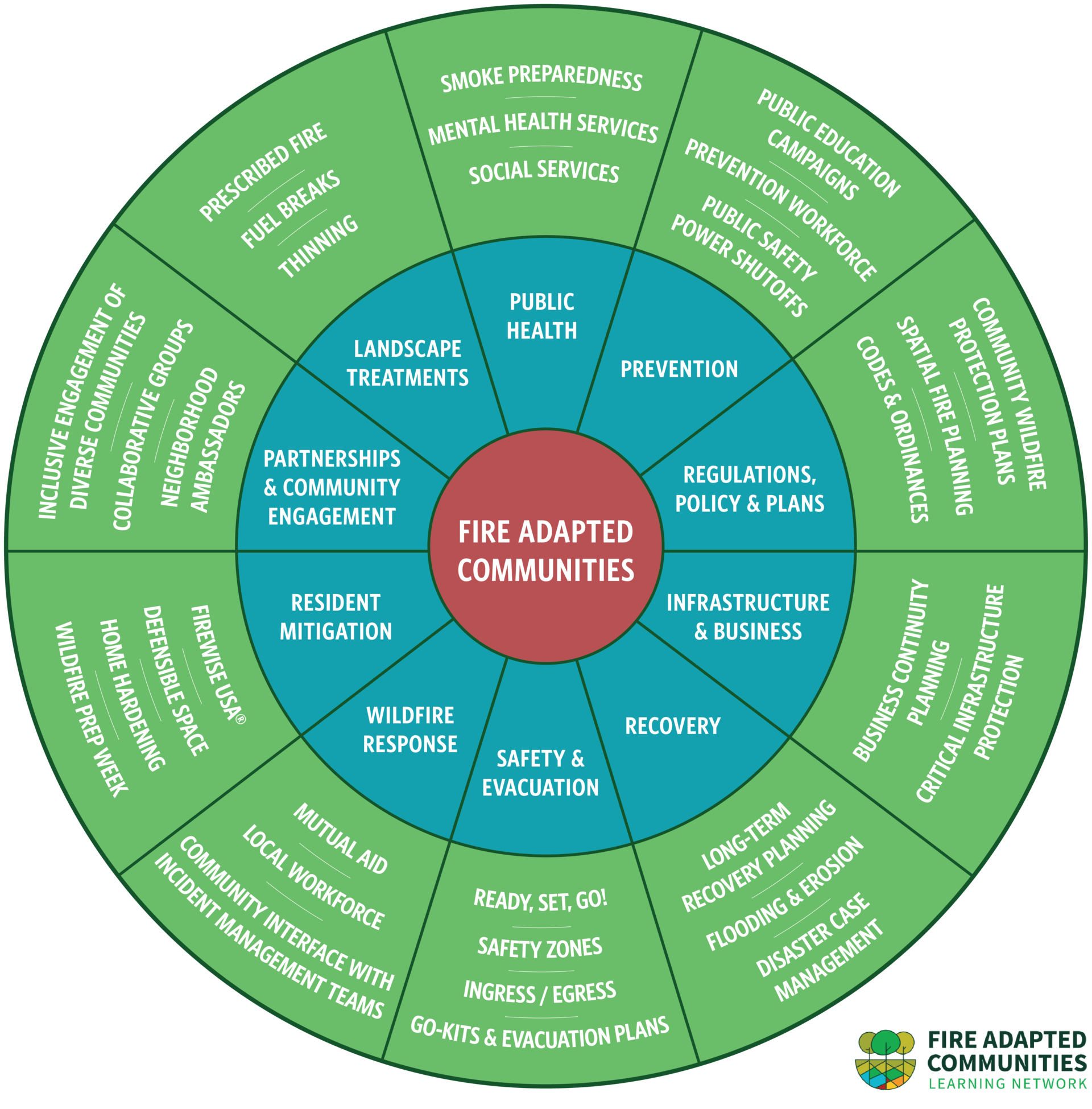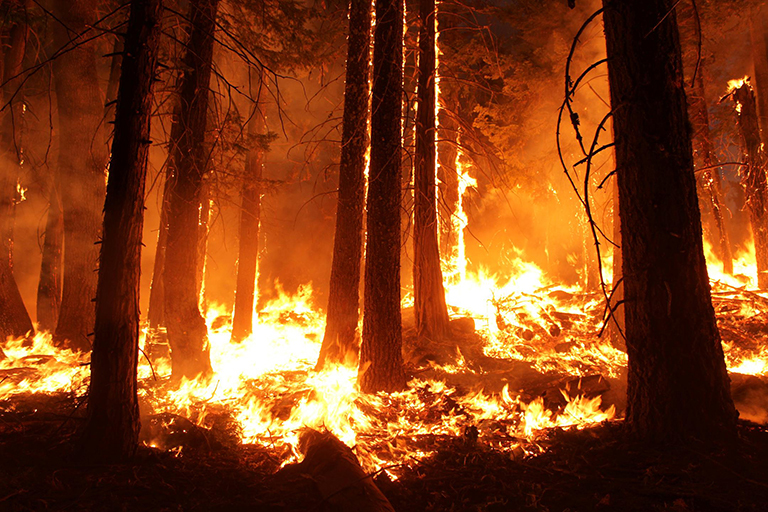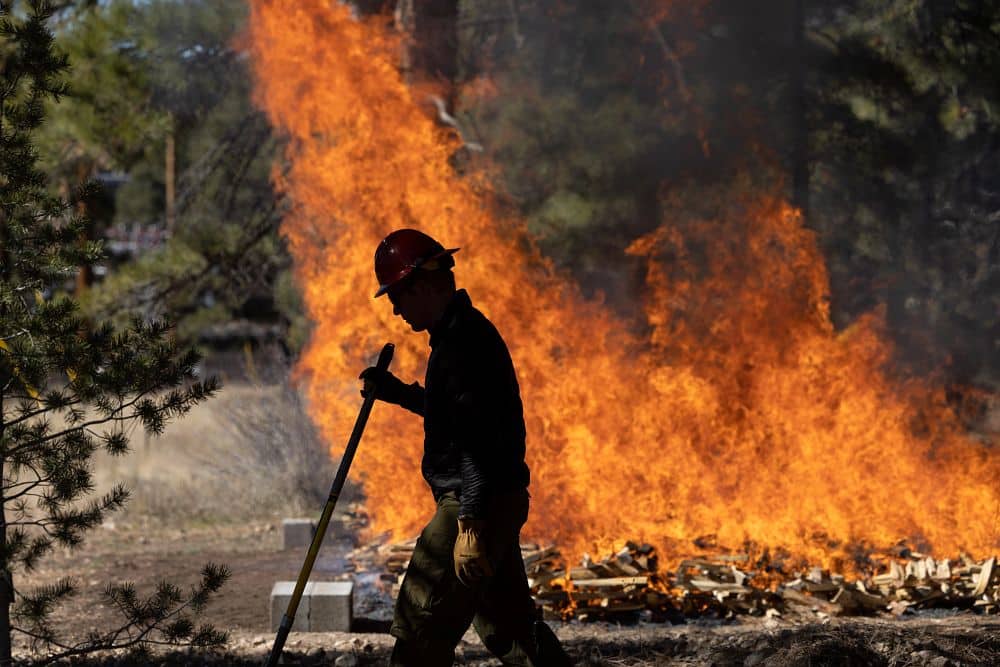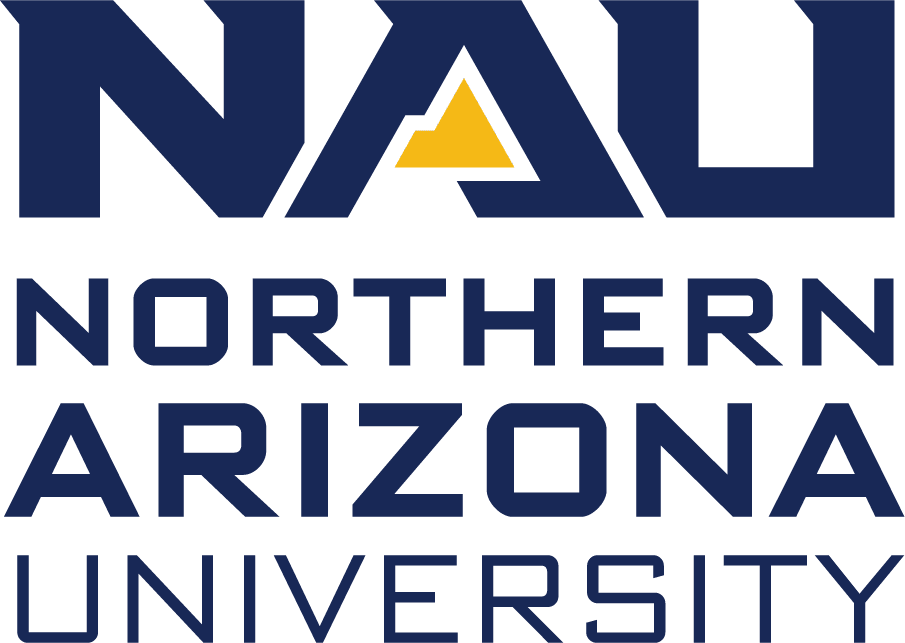A $5 million grant from the Office of the Governor is funding the Arizona Wildfire Initiative (AZWI), an innovative new program at NAU aimed at ensuring the state of Arizona is better prepared for wildfire prevention, management and recovery.
Andi Thode, a professor of fire ecology and management at NAU, and David Auty, the interim director of the School of Forestry, are principal investigators for the AZWI, which will build on the work already happening at the School of Forestry and the Southwest Fire Science Consortium. The new initiative will focus its work in three areas critical to the state: workforce development and education; science dissemination and outreach; and community resilience to wildfire.
It’s an all-hands-on-deck effort as Arizona, along with the rest of the Southwest, is experiencing more severe fires that are having an increasingly negative effect on forest and wildland ecosystems, cities, people, animals and air quality statewide.
“Arizona will confront the threat of wildfire by tackling the problem on all fronts—research, prevention, workforce development, forest management and fire recovery,” Arizona Gov. Katie Hobbs said. “The Office of the Governor is pleased to support the critical work of the Arizona Wildfire Initiative, and we are eager to see the lessons learned put into action to protect our state.”
The AZWI is unique in that, while it does have a research component, its work is largely focused on preparing communities, informing fire and forest management work and filling gaps in the workforce of this critical industry. It is designed to benefit state and federal agencies who are working to maintain forest health and manage wildfire risk reduction and recovery; local and tribal governments; policymakers; current and future fire and forestry professionals; and all residents of Arizona, who increasingly live in fire-prone ecosystems. AZWI aims to fill the state’s critical needs to better understand and prepare for wildfire.
“We want to take it a step further and have people think about how fire works in their ecosystem—understanding how fire functions in the system that you live in, understanding what the fire situation is every day and being prepared for that,” Thode said. “We look at the weather report and bring an umbrella or put on a jacket; we should look at the weather report and know how to be prepared for fire at different times of the year.”
Workforce development and education
One of the first tasks of the AZWI is a needs assessment talking to stakeholders about where they’re seeing gaps in the workforce and the best way to address those gaps in the coming years. NAU starts a new undergraduate Fire and Forest Management Professional Certificate in Fall 2023. This is for people already working in the field who are looking for additional education. NAU also is developing two new online degree programs, which will start in Fall 2024. These include an online master’s degree and an undergraduate bachelor’s degree. The goal is to make these programs as accessible as possible to people who may be interested in this line of work.
The bachelor’s degree is in applied fire science, while the master’s degree is in forest and natural resource stewardship. It addresses one piece of the workforce shortage—helping firefighters and fire and forest managers to be better prepared. Another key piece is recruiting a diverse workforce, since different parts of Arizona face different risks of and from wildfire. Through grant funding from the U.S. Forest Service, the School of Forestry will expand recruitment and retention of students into the forestry disciplines to help reach the NAU Elevating Excellence goals of broadening access to more Arizonans, improving retention rates and increasing educational attainment and improving student momentum and post-graduate success.
“We want to make sure that while students are at school, they will have opportunities to build those skillsets that are critical in the world of fire and forestry,” Thode said. “We’re just trying to lift all of that.”
Science dissemination and outreach
Managing forest health plays a significant role in how a forest responds to fire, and as climate changes, this is a critical area of research for scientists. However, Thode has seen two gaps in ensuring this research is fully useful: 1) forest managers don’t know what research has been done; and 2) researchers don’t know where there are gaps in work that would be especially critical to land managers. The AZWI will tackle both of those issues.
The first task, which is already in process, is taking the research already done and synthesizing it from academic papers into five-page or one-page synopses that tell forest managers, tribal governments and other government officials the research in a digestible format so it will be more useful to those who need to put it to use. That also is helping to identify gaps in research.
“What people think is a need from a research perspective is not always a need, but they haven’t always been put into digestible formats, so we’re running through the literature and seeing what is out there, finding where the holes actually are,” Thode said.
In partnership with the Southwest Fire Science Consortium (also hosted in the SOF), the team also is working on developing workshops and field trips, getting natural resource managers, policymakers and government representatives to affected areas to give them a better understanding of the array of factors that affect Arizona’s response to wildfires. Additionally, videos for teaching and training, webinars and working with K-12 classrooms with the Fire Ecology Learning Lab curriculum will help connect current and future students and managers to the science related to wildfire and forestry.
The team will be hiring a tribal liaison in conjunction with NAU’s Institute for Tribal Environmental Professionals (ITEP), which will help determine what tribal needs are, create partnerships with the tribes throughout the state and create opportunities for research, education and addressing community needs. One of the first projects they will be doing is a Tribal Fire Workshop with the Inter Tribal Council of Arizona and other partners.
“The goal of this program is to get emerging science on the ground by connecting scientists, land managers and the public,” she said. “Community-facing work is
Community preparedness for wildfire
Every community in Arizona is at risk of wildfire, but they’re not all at risk in the same way. The ponderosa pine forests in Flagstaff are facing different needs than the desert grasslands farther south. Part of AZWI’s work in identifying the disparate issues and ensuring individual communities have the resources to address those issues.
“Some cities will want to be part of a big network, others want to have a tight-knit community,” Thode said. “We have a lot of different fire regimes for people to be thinking about in the Southwest.”
A big part of this work will be connecting cities and towns to the national Fire Adapted Communities network. They also will do a needs assessment to determine what capacity, organization and resources communities need related to preparation before wildfire, actions during a wildfire and recovery after wildfire. AZWI team members professor Cat Edgley and Laura Jo West are taking the lead bringing together partners to help Arizona communities become more resilient to wildfire.
Learn more at AZwildfire.org.
Heidi Toth | NAU Communications
(928) 523-8737 | heidi.toth@nau.edu





